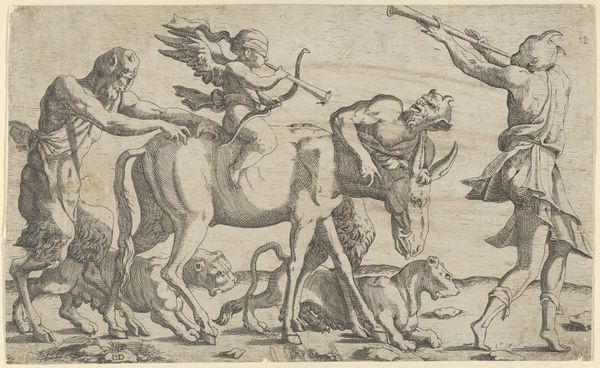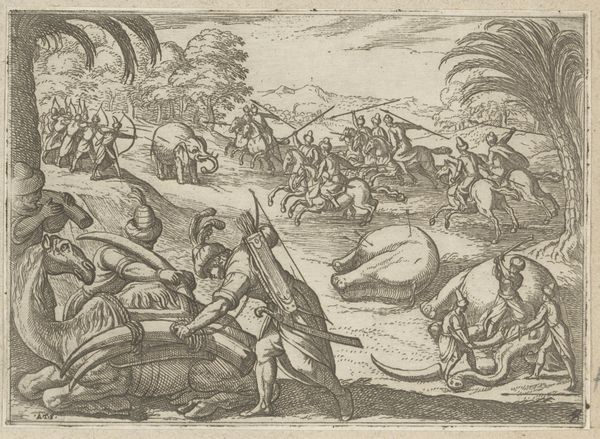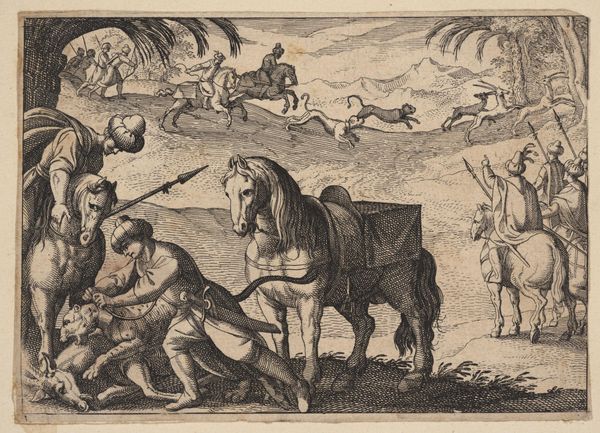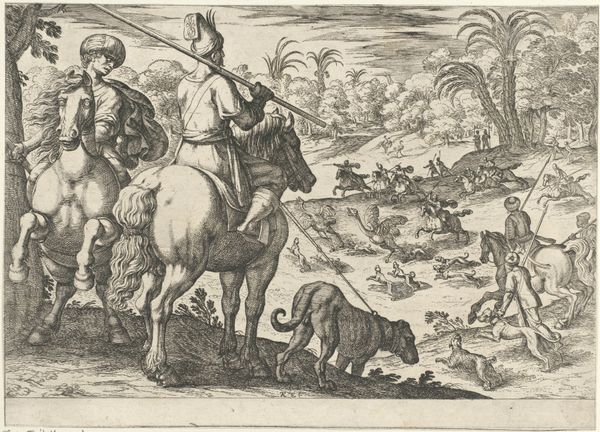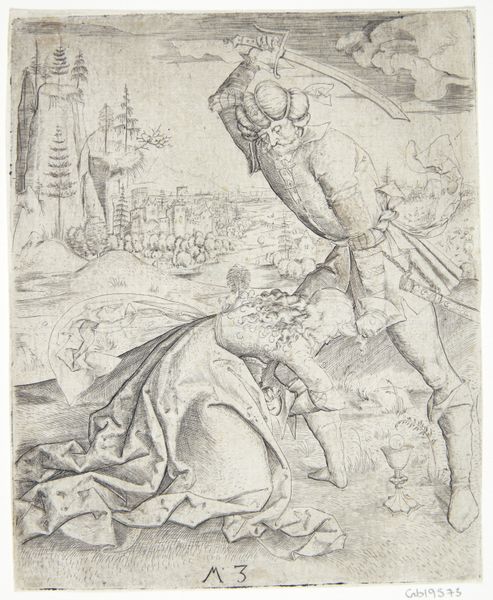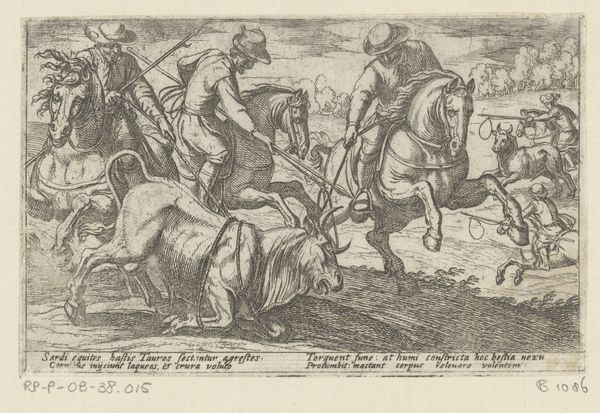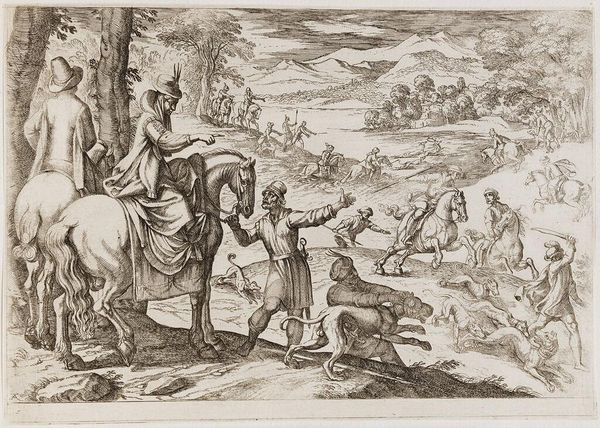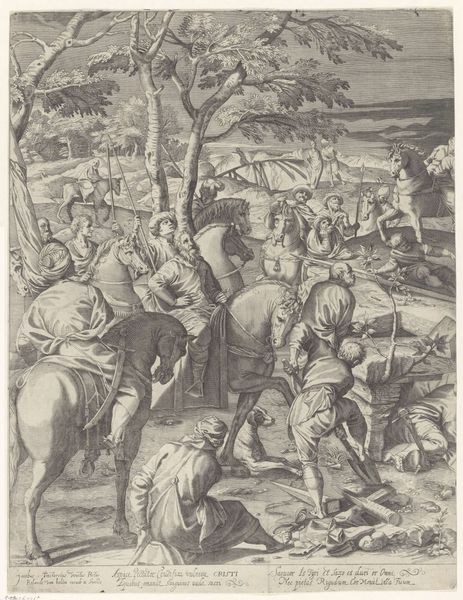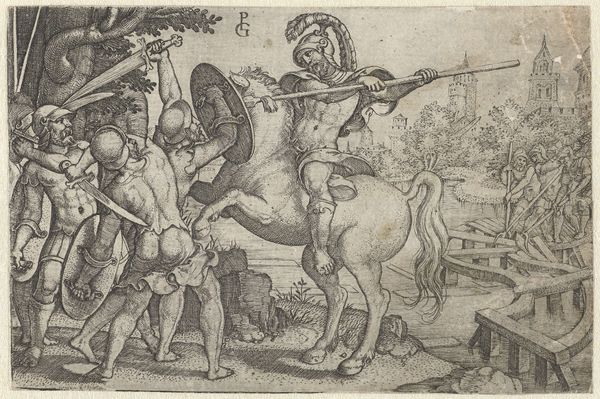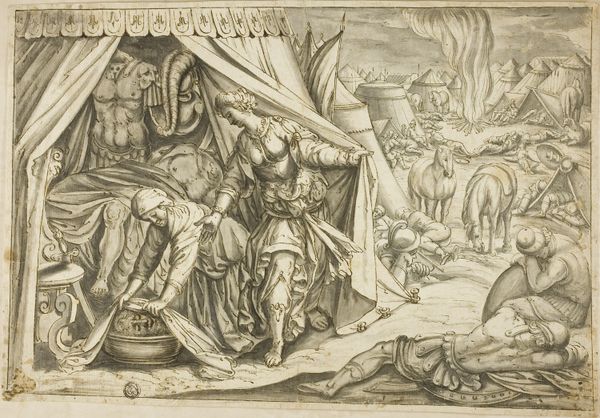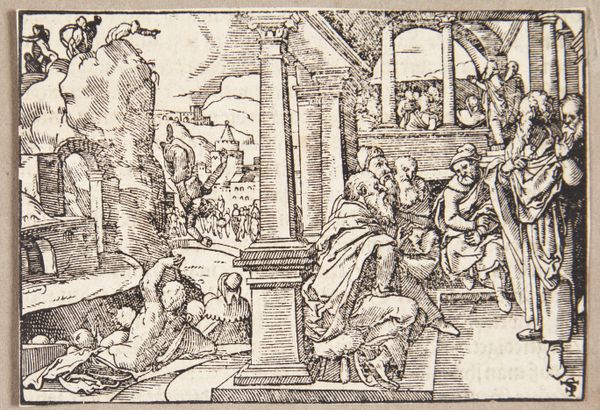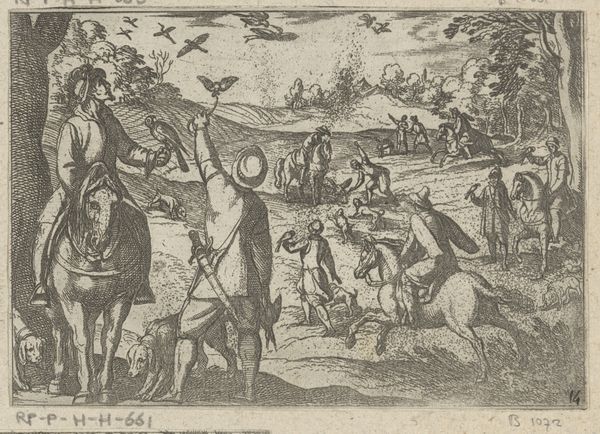
engraving
#
landscape
#
figuration
#
northern-renaissance
#
engraving
Dimensions: height 276 mm, width 360 mm
Copyright: Rijks Museum: Open Domain
Curator: This engraving by Jan van Scorel, created sometime between 1540 and 1545, is titled "Two Women on Mules." It presents a detailed Northern Renaissance landscape filled with figures and architectural elements. Editor: It strikes me as a composition of contrasts. The sharp, precise lines of the engraving capture both the organic forms of nature and the solidity of the architectural structure. The tree on the left seems to embrace the riders, drawing me into their journey. Curator: Indeed, observe how the cross-hatching technique lends itself beautifully to the textures depicted. From the soft folds of the women's drapery to the rough bark of the tree, the artist's process is laid bare, as are the tools of the engraver's trade. Consider, too, how the choice of the engraved line itself defines the limits and structure of the depicted figures. Editor: The artist's emphasis on process also provides context. In terms of production, what does it say about the role of printmaking and the rise of its dissemination methods? Was this piece commissioned, or was it a work intended for broader distribution? That the women are riding mules, not horses, might suggest their socio-economic positioning. Curator: Interesting observations. Focusing on its aesthetic elements, one finds a successful creation of depth achieved using atmospheric perspective. The distant town and mountains recede softly, their details blurred in contrast to the crisp foreground. The symbolism inherent in these visual relationships requires some engagement to be fully decoded. Editor: I'd counter that such symbolism is secondary to the economic and societal factors governing the work. In early printmaking, the distribution networks mattered far more than arcane symbolic programs in driving the content's accessibility and social relevance. But viewed with these points in mind, one can appreciate how technique and intention coalesce into something quite significant. Curator: Agreed. Whether viewed through the lens of formalism or with an eye toward material culture, this piece by van Scorel continues to generate a thoughtful discussion on art, history, and the dynamics between them. Editor: I leave with a better sense of its complexity – appreciating both its artistry and the circumstances of its making. Thank you.
Comments
No comments
Be the first to comment and join the conversation on the ultimate creative platform.

